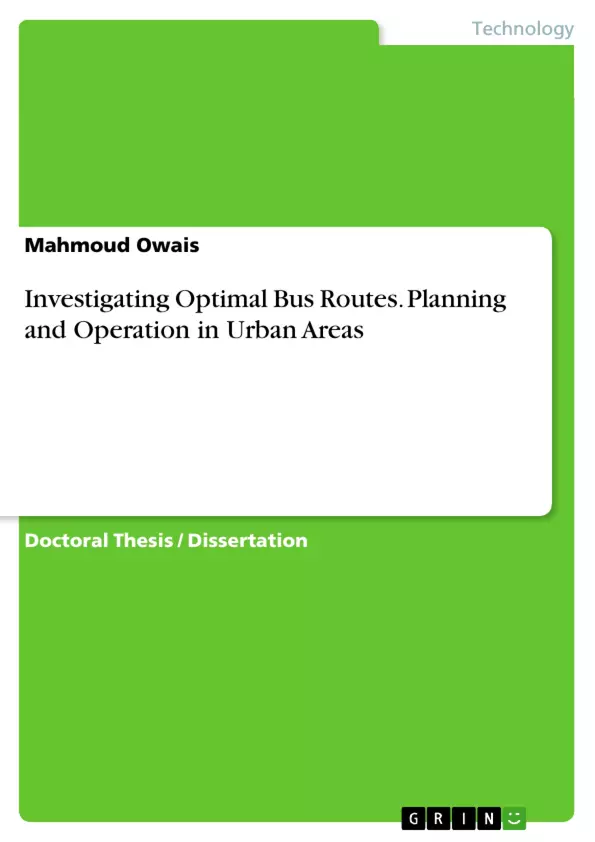Transit route Network Design Problem (TrNDP) is the most important component in Transit planning, in which the overall cost of the public transportation system highly depends on it. The main purpose of this study is to develop a novel solution methodology for the TrNDP, which goes beyond pervious traditional sophisticated approaches. The novelty of the solution methodology, adopted in this studyr, stands on the deterministic operators which are tackled to construct bus routes. The deterministic manner of the TrNDP solution relies on using linear and integer mathematical formulations that can be solved exactly with their standard solvers. The solution methodology has been tested through Mandl’s benchmark network problem. The test results showed that the methodology developed in this research is able to improve the given network solution in terms of number of constructed routes, direct transit service coverage, transfer directness and solution reliability. Although the set of routes resulted from the methodology would stand alone as a final efficient solution for TrNDP, it could be used as an initial solution for meta-heuristic procedures to approach global optimal. Based on the presented methodology, a more robust network optimization tool would be produced for public transportation planning purposes.
Inhaltsverzeichnis (Table of Contents)
- Chapter 1: Introduction
- 1.1: Background and Importance of Transportation System
- 1.2: Problem Statement
- 1.3: Objectives of the Study
- 1.4: Scope and Limitations of the Study
- 1.5: Research Methodology
- Chapter 2: Literature Review
- 2.1: Review of Bus Route Optimization Methods
- 2.2: Review of Bus Routing Models
- 2.3: Review of Bus Network Design Principles
- Chapter 3: Case Study: Assiut City
- 3.1: Overview of Assiut City
- 3.2: Data Collection and Analysis
- 3.3: Existing Bus Network Analysis
- 3.4: Formulation of the Optimization Problem
- Chapter 4: Modeling and Optimization of Bus Routes
- 4.1: Development of the Optimization Model
- 4.2: Model Implementation and Solution
- Chapter 5: Evaluation and Analysis of Results
- 5.1: Performance Evaluation Metrics
- 5.2: Comparison of Existing and Optimized Routes
- 5.3: Sensitivity Analysis
- Chapter 6: Conclusions and Recommendations
Zielsetzung und Themenschwerpunkte (Objectives and Key Themes)
This thesis investigates the optimization of bus routes in urban areas, with a specific focus on Assiut City, Egypt. The main objective is to improve the efficiency and effectiveness of the city's public transportation system by identifying and implementing optimal bus routes. The research aims to:- Analyze the existing bus network in Assiut City
- Develop a comprehensive bus route optimization model
- Implement the model to determine optimal bus routes
- Evaluate the performance of the optimized routes
- Provide recommendations for the implementation of the optimized bus network
Zusammenfassung der Kapitel (Chapter Summaries)
Chapter 1 introduces the importance of transportation systems in urban areas and presents the problem statement and objectives of the study. The chapter outlines the scope and limitations of the research and describes the methodology used to conduct the study. Chapter 2 provides a comprehensive literature review focusing on different methods and models used for bus route optimization. The review covers topics like bus route optimization algorithms, bus network design principles, and existing case studies.
Chapter 3 focuses on the case study of Assiut City. It provides an overview of the city's transportation system and describes the data collection process. Chapter 4 presents the development of the optimization model used to determine optimal bus routes in Assiut City. The model is explained in detail, and its implementation and solution are described. Chapter 5 evaluates the performance of the optimized routes and compares them to the existing bus network. It also analyzes the sensitivity of the model to different parameters. Chapter 6 summarizes the findings of the study and provides recommendations for the implementation of the optimized bus network.
Schlüsselwörter (Keywords)
This thesis delves into the field of urban transportation optimization with a focus on bus route planning. The keywords that define its focus include: urban transportation, public transportation, bus route optimization, network optimization, Assiut City, Egypt, transportation modeling, efficiency, effectiveness, and performance evaluation.- Quote paper
- Mahmoud Owais (Author), 2015, Investigating Optimal Bus Routes. Planning and Operation in Urban Areas, Munich, GRIN Verlag, https://www.grin.com/document/293714



